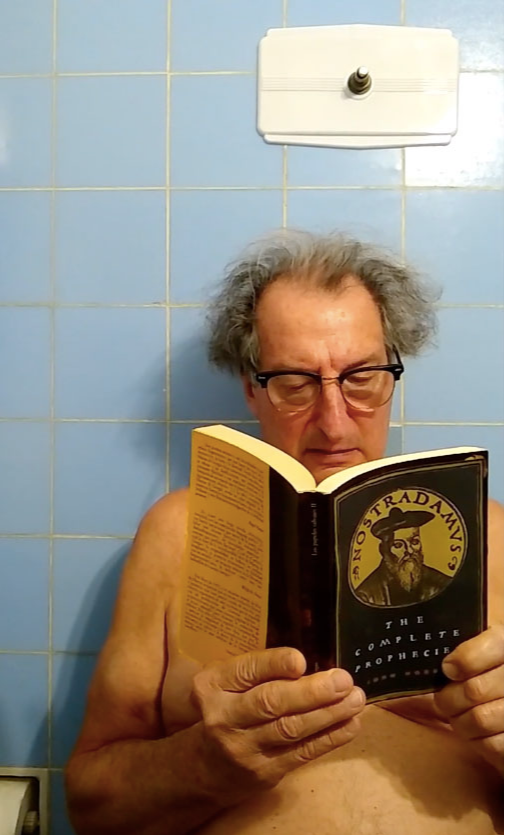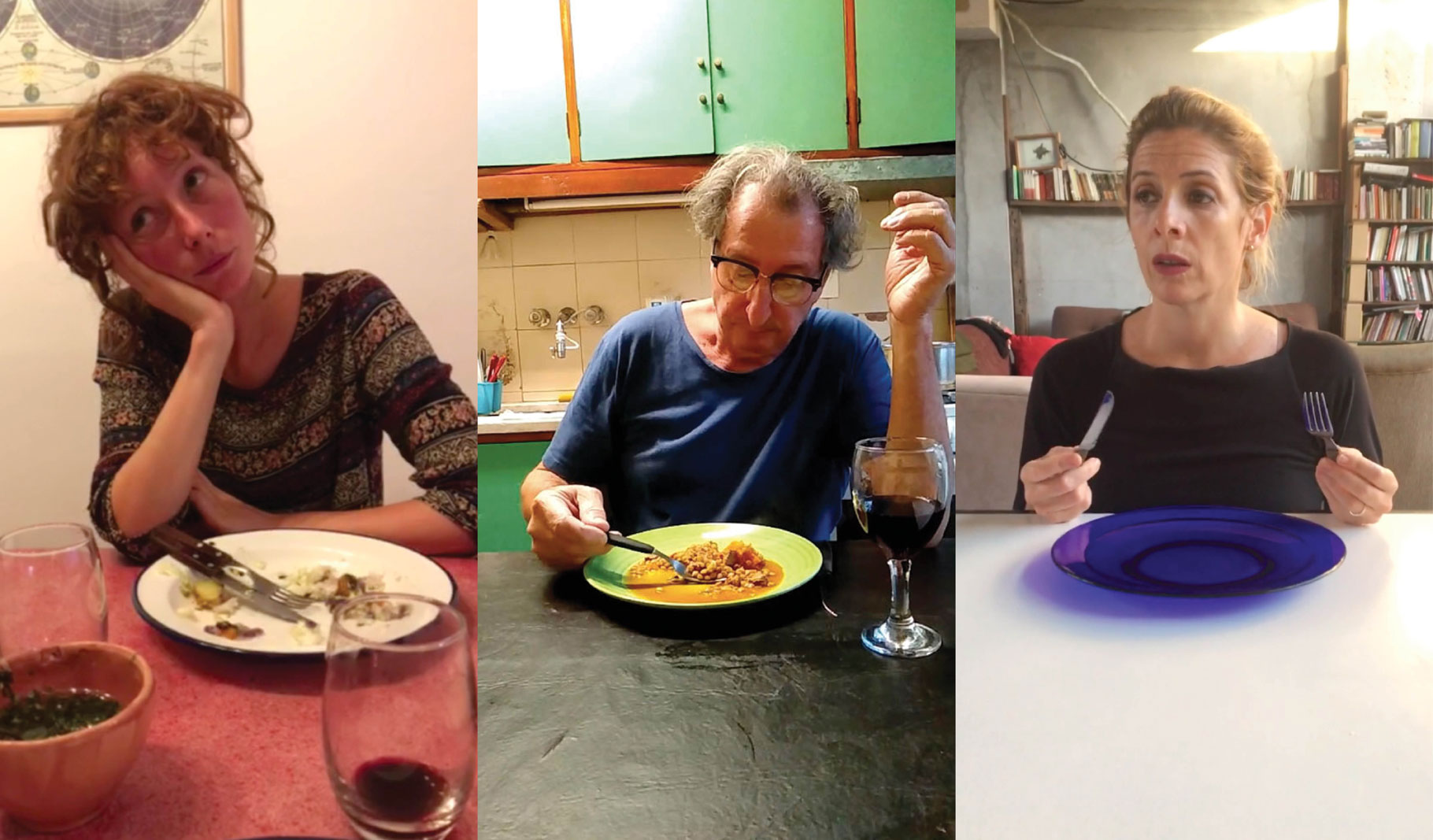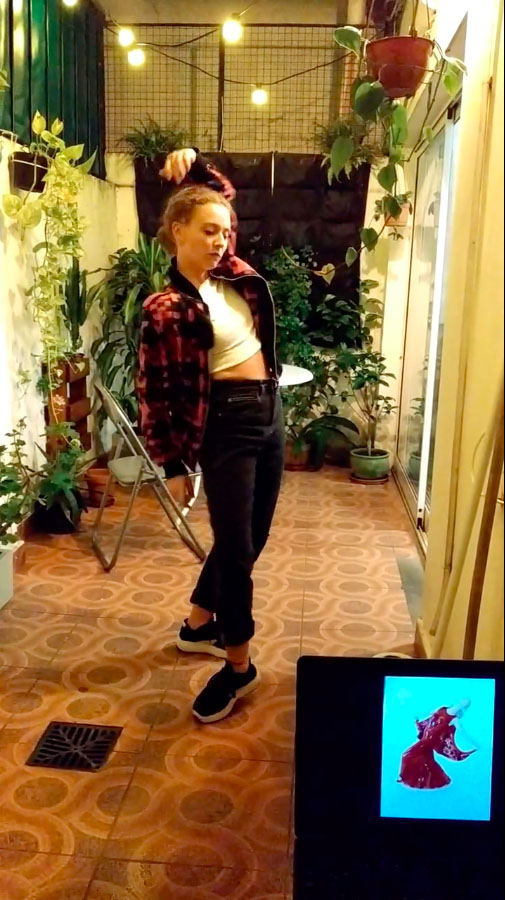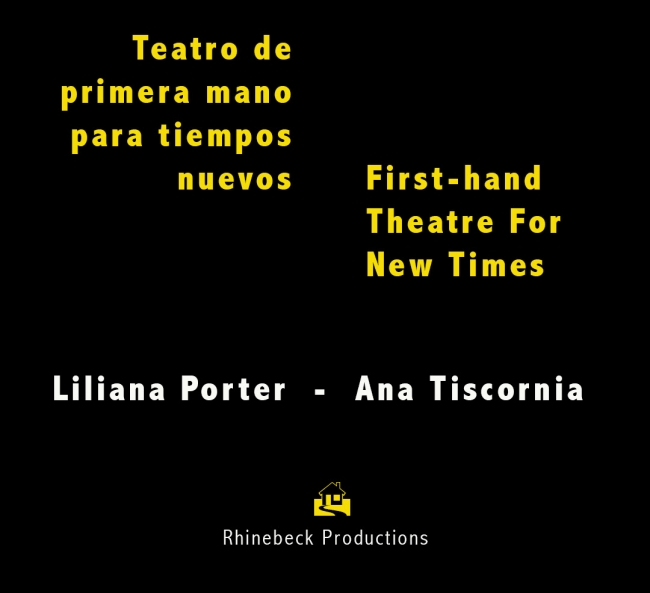Sala10: First-hand Theatre for New Times
Artistic activity in these disconcerting times gives us a type of immunity—not against the virus, but against fear, isolation, madness, chaos. It is a privilege to have a tool that allows us to communicate with others. It is also obviously a challenge, but art is always an experiment, which implies the possibility of failure. At the beginning of the quarantine, we started to conceptualize a play that would be filmed on cellphones, whose stage would consist of the houses of each of the actors. The setting and form were dictated by the concepts at hand: time, discontinuity and isolation.
Liliana Porter y Ana Tiscornia

Theater as absence
By Jorge Dubatti
On the Quarantine Stage
Cuauhtémoc Medina
What does enclosure feel like? Horror and possibility. Despite the appearance of a unified action, the enclosure involving two-thirds of humanity, in a more or less disciplined fashion, in an attempt to avoid the spread of the COVID-19 pandemic, nevertheless makes visible the radical differences in people’s opportunities and conditions, not only in social, geographic and cultural terms, but also in terms of the variability of moods and rhythms.
Many of us have been paralyzed and overwhelmed by the excessive demand of obligations in this involuntary situation: the combination of working from home, the anxiety caused by the information we receive and the enclosure with our families has transformed the passing of time into a nightmare. Nevertheless, others have attempted to transform this anguish through creation and signifying. As someone said on Twitter, “We wanted to live through a historic moment, just not this one.” Besides not dying, not allowing those we care about to die and sharing the information needed to prevent the world from dying, there is the challenge of doing something with this time that, in a particularly cruel fashion, we will never get back.

There are, of course, those who have wanted to give form to the void in some form or another. When the quarantine was declared in the United States during the first week of March 2020, the artists Ana Tiscornia and Liliana Porter left Manhattan to seek refuge in their house in upstate New York. After just a few days, they saw how, like many others, their agenda emptied out: trips, exhibitions and conferences were all canceled, while infection, hospitalization and death rates began to give form to a catastrophe without precedent in our lifetimes. Instead of being hypnotized by television and social media, the pair of artists took a deep breath, set out a plan and, as a note from March 12, 2020 reads: “Art is our good fortune.”

Taking advantage of their long collaboration in both life and art, which has blown up in recent years through exhibitions, conspiracies and commissions “made by four hands,” they settled on the format of writing a type of play to be performed at home, via cellphones. Liliana Porter is an epic poet of failure and Ana Tiscornia a tenacious researcher of the aporia of modernism and utopia. In line with the logic of their work, they decided to write a play based around the quarantine that the majority of humanity is being subjected to. This idea, like much of their practice, was both daring and fun: turning the situation of emergency, isolation and enclosure into poetry, using the quarantine as context and medium.
First-hand Theatre for New Times is constructed from short episodes that encapsulate an everyday life that has been undermined and express the total crisis to which the quarantine has subjected the theater world. Tiscornia and Porter composed the script in just a couple of days. A few days later, they contacted the videographer Federico Lo Bianco and the composer Sylvia Meyer and invited an entire company of unemployed actors to participate from their homes in Argentina. Just four days after conceiving the project, each of the participating actors had filmed their part and work was wrapped up in less than a week.
The actors had to capture situations that revealed the absurd effort to give continuity to the practices of theater, music, recitation and dance in the absence of a shared space. The play is both a comedy and a drama, exploring the asphyxiation and agony of the medium with humor and opportunism. At the same time, it suggests that, trapped in our own personal prisons and only seeing the world through screens and devices, we have all reinvented ourselves as an immense, unemployed theater troupe. Clowns and acrobats with neither an orchestra nor a caravan, second by second we live by a slogan, which has become one of resistance: “The show must go on.”

Liliana Porter and Ana Tiscornia, First-Hand Theater for New Times, 2020
This piece was filmed in March in Buenos Aires, New Paltz and Rhinebeck
Video, 21’ 31’’
Script and Direction: Liliana Porter and Ana Tiscornia
Cast: Florencia Alonso, Patricio Aramburu, Javier Drolas, Juan Pablo Garaventa, Lucía
García Puente, Valeria Lois, Sabrina Macchi, Horacio Marassi, Alejandro Vitello, Sergio Vitello
Music: Sylvia Meyer
Editing: Federico Lo Bianco

LILIANA PORTER
(Buenos Aires, 1941; she lives and works in New York)
Professor emeritus at Queens College, City University of New York, she works in a variety of media: printmaking, painting, photography, video, installation, theater and public art. Her work formed part of the 57th Venice Biennale (2017) and has been exhibited in many galleries, museums and other institutions around the world, including the Tamayo Museum (Mexico City), MoMa and the Whitney Museum of American Art (New York), MALBA (Buenos Aires), Museo Nacional Centro de Arte Reina Sofía (Madrid) and The Museum of Fine Art (Boston).

ANA TISCORNIA
(Montevideo, 1951; she lives and works in New York)
A professor emeritus at the State University of New York at Old Westbury, she works in a variety of media: collage on paper, painting, installation, printmaking, video, sculpture, theater and public art. Her work has been exhibited at the Gurvich Museum (Montevideo), the Josée Bienvenu Gallery (New York), the Alejandra Von Hartz Gallery (Miami) and the Nora Fisch Gallery (Buenos Aires). She represented Uruguay at the 2nd and 9th Havana Biennales and at the 3rd Lima Biennale.



